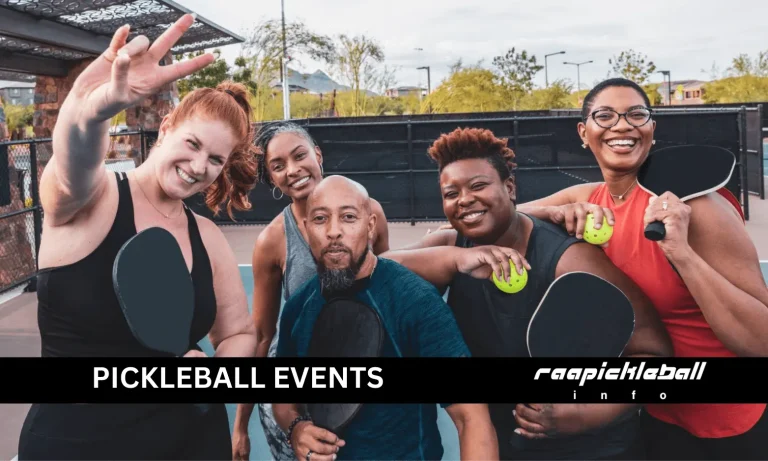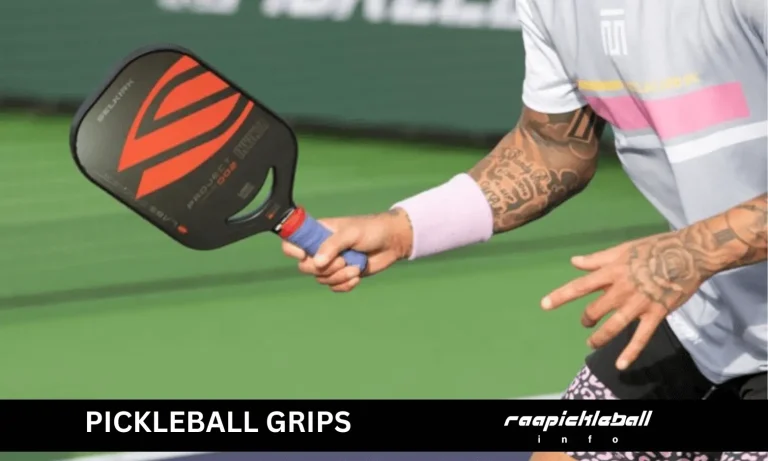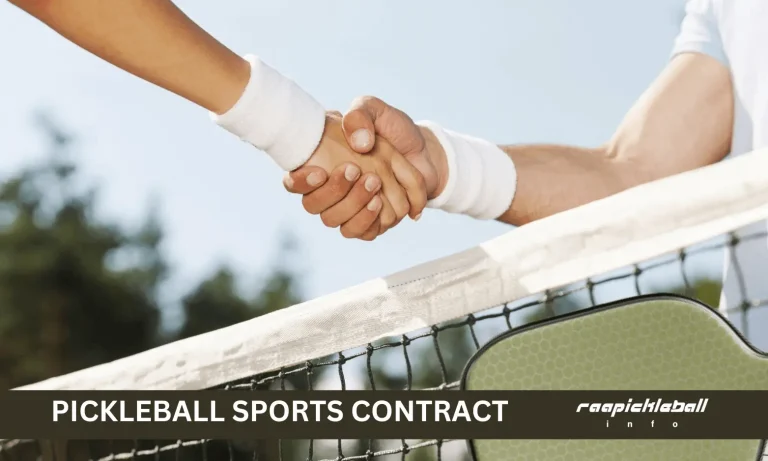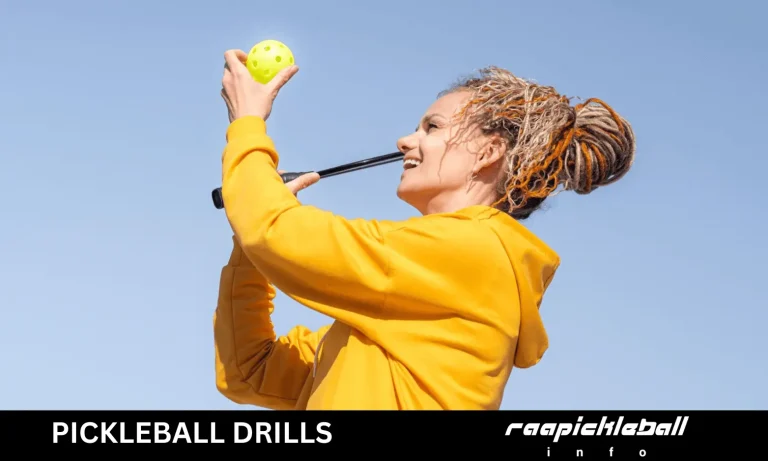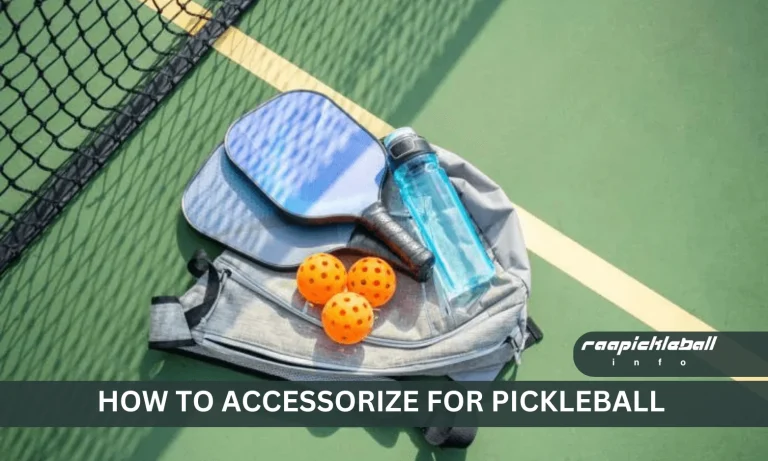Pickleball is a fast-growing racket sport. As a strategic game, each point matters, and the serve sets the stage for every rally. Executing pickleball legal serve is thus critical for victory. This blog will provide an in-depth guide on mastering the art of the legal and tactical pickleball serve.
Understanding Legal Serve Rules
The intricate rules defining a legal pickleball form the foundation all players must understand. There are two primary serve types, each with its regulations that must be followed, you must also know about 3.0 to 4.0 + Faster With This Pickleball Trick.
The Volley Serve
It is also known as the “out-of-the-air serve,” the volley serve begins by dropping the ball and then hitting it before it bounces. For this serve, there are three fundamental rules:
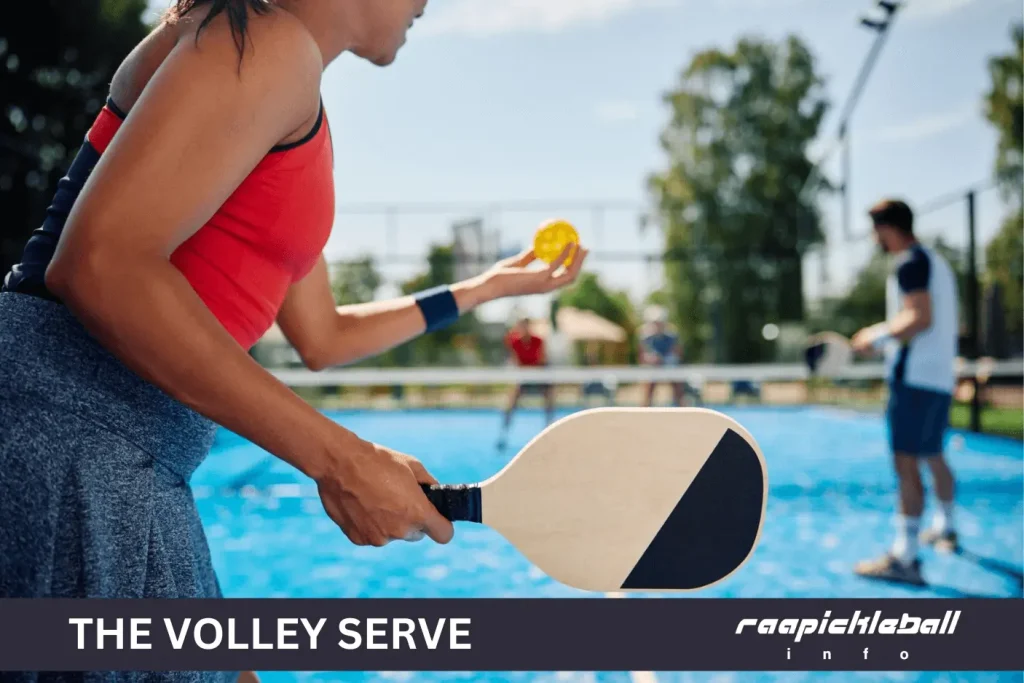
- The contact point between the paddle and ball must occur below the waistline, specifically below the navel area. This rule ensures that players use the proper underhand swinging motion.
- The paddle must strike the ball in an upward arc. No sideways or downward motions are permitted. The swing path should travel upwards as contact is made to give the ball flight.
- At the point of contact, the paddle head must be lower than the wrist. It again reinforces the underhand swing path necessary for a legal volley serve.
The Drop Serve
A more beginner-friendly technique, the drop serve involves simply dropping the ball from any height and letting it bounce once before striking it. This single required bounce makes timing the contact easier than the volley serve’s continuous motion. While physically less demanding in its execution, the drop serve must still adhere to fundamental pickleball serve regulations. For example, both serve types mandate that the player’s feet stay behind the baseline during the serve motion. The key benefit of mastering the drop serve is developing control and spin variation on returns.
7 Top Pickleball Serves with Techniques
Take your pickleball game to the next level by mastering these 7 legal serves. Each has its own style and strategy to dismantle your opponent.
1. Topspin Serve
- Technique: Strike upward to put topspin on the ball
- Effect: The ball dips quickly with a forward bounce
- Strategy: Aim deep near the baseline to force the opponent back and make the return difficult
2. High Topspin Serve
- Technique: Exaggerated upward swing and open paddle face
- Effect: High arcing shot with extreme topspin
- Strategy: Pushes opponent back with high bounce, limiting power on return
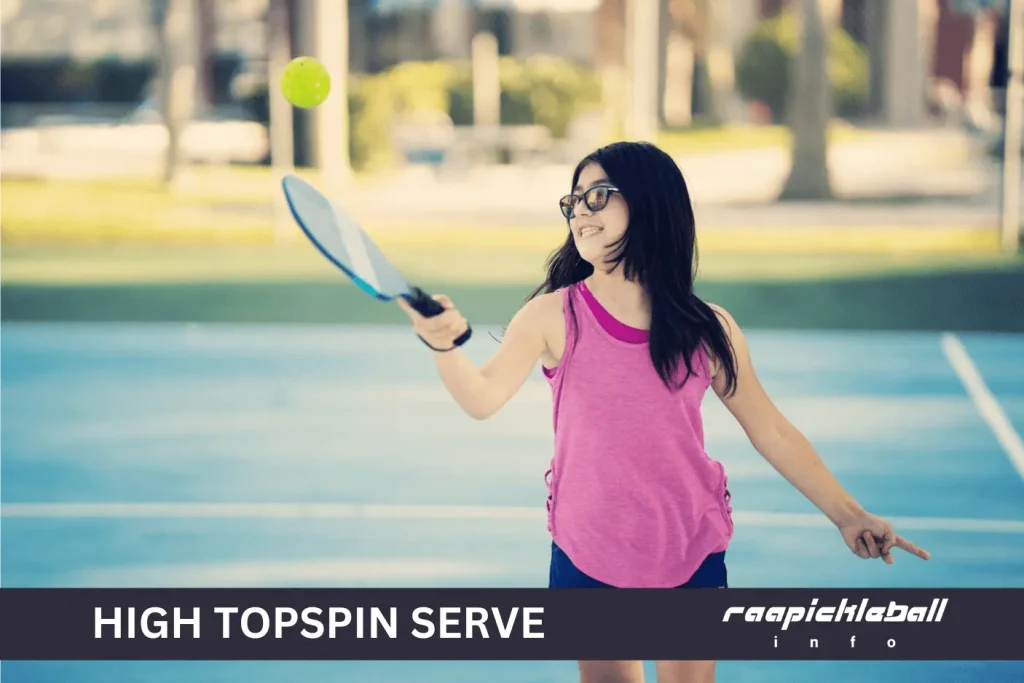
3. Slow High Lob Serve
- Technique: Gently lift the ball, focusing on height over pace
- Effect: Floats high before falling deep
- Strategy: Breaks aggressive opponent rhythm and timing
4. Short Angle Topspin Serve
- Technique: Topspin aimed at a sharp angle
- Effect: Lands near the sideline, harsh in opponent’s court
- Strategy: Pulls opponent wide, challenging return
5. Sidespin/Slice Serve
- Technique: Slicing motion to generate sidespin
- Effect: The ball curves sideways after the bounce
- Strategy: Tough angle for righty opponents stretching left
6. Underhand Power Serve
- Technique: Underhand strike for speed
- Effect: Low, fast-serve surprises
- Strategy: Destroys timing, works well after slower serves
7. Soft Serve to Kitchen
- Technique: Gentle serve, just clearing the net
- Effect: Lands soft near kitchen line
- Strategy: Has the opponent sprint up from the baseline
Practice these 7 serve types to control pace, keep opponents guessing, and create weaknesses to attack!
Six Foundational Rules for Legal Serves
In conjunction with the serve-specific guidelines outlined already, six core rules form the bedrock of proper pickleball serves no matter which types you employ:
- Players receive only one serve attempt per turn before faulting. It raises the stakes of each serve, emphasizing focus and practice.
- Both feet must remain behind the baseline as the player swings and interacts with the ball. Even partial oversteps are grounds for a foot fault.
- The ball must land within the diagonally opposite service area court after bouncing. Serves into an adjacent court are automatic faults.
- Only overarm serving motions are permitted. Underarm and sideways serves are prohibited as they limit the ball’s speed and flight.
- Contact must occur below the waistline as measured at the navel. It applies to both serve varieties of pickleball.
- The paddle orientation and angle must suit the serve type, with the volley serve necessitating a vertically aligned paddle face making an upward connection with the ball at a near-horizontal angle.
Mastering Advanced Serving Strategies
Once players have developed consistent legal serves, they can evolve to integrate advanced strategies:
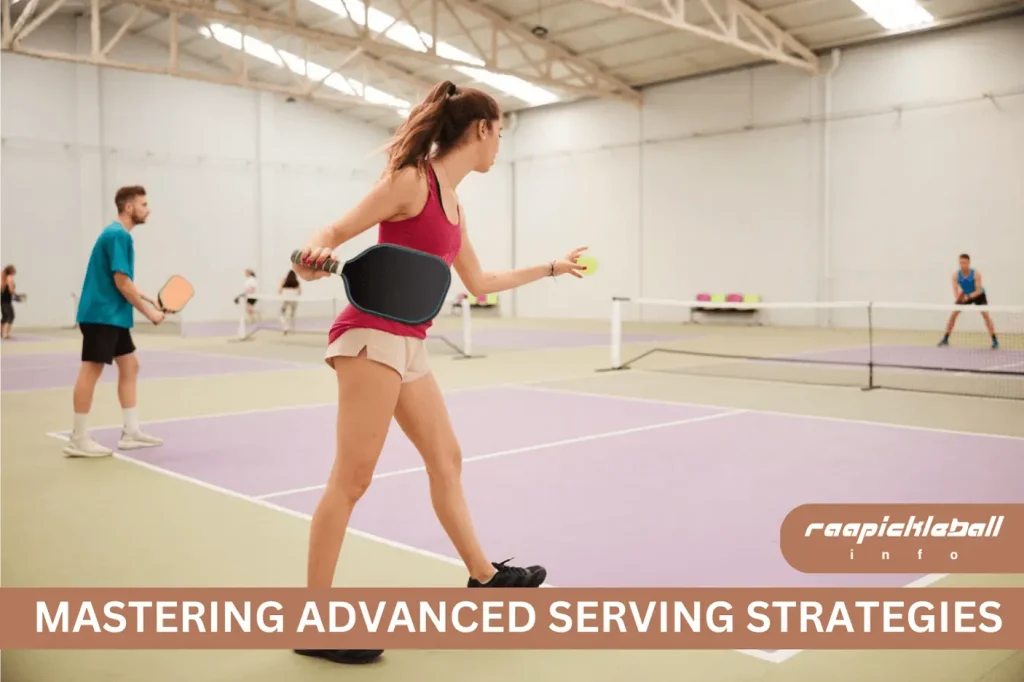
- It targets specific locations on the court to serve to disrupt the opponent’s positioning and readiness. It could involve shorter serves that catch them moving forward, or wide-angle serves necessitating fast direction changes.
- Varying the speed, spin, placement, and patterns of serves to keep opponents off-balance and unsure of what to expect next. Mixing tempos with low/topspin serves prevents them from setting an anticipatory rhythm.
- Exploiting broad angle forces opponents into pivot backhands and other weaker stroke returns on their side. Even advanced players have some limitations moving to balls at extremities.
- Using depth and consistency to repeatedly serve deep into the backcourt near the baseline to limit viable return options. The threat of the serve alone can lead to opponents tightening up.
Conclusion
Mastering the legal serve is vital in the strategic sport of pickleball. It requires a thorough understanding of service regulations, positioning, and advanced tactics. With a practical and well-practiced serve, you gain an instant advantage at the start of every rally.
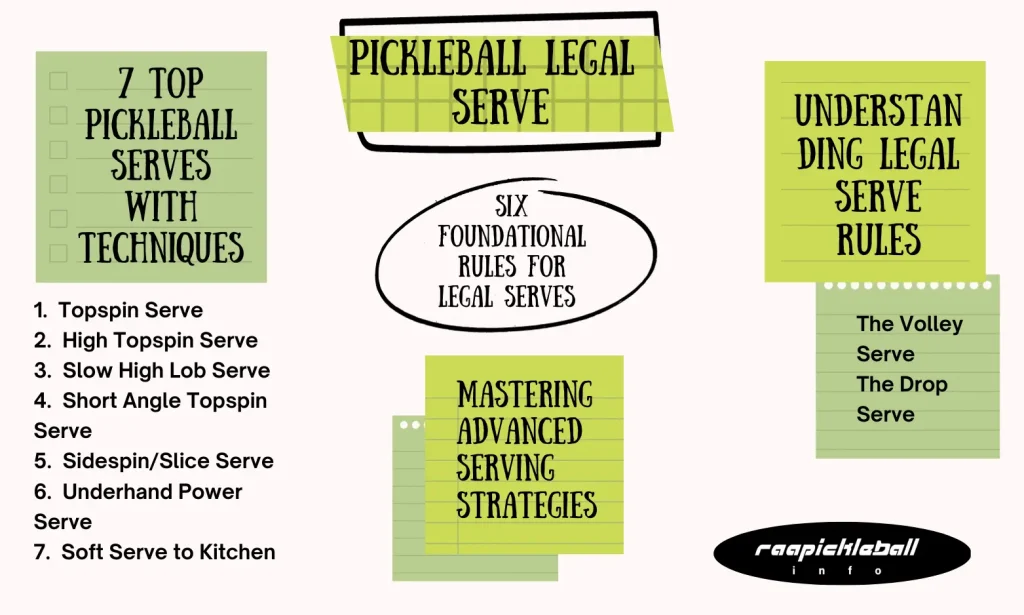
FAQs
What are the two main types of legal pickleball serves?
The two main legal serve types are the volley serve (hitting the ball before it bounces) and the drop serve (letting the ball bounce once before hitting it).
What is one benefit of mastering the drop serve?
Mastering the drop serve helps develop better control and the ability to add spin variation on returns.
What is one advanced Serving Pickleball Strategy mentioned in the guide?
One advanced strategy is targeting specific locations on the court to disrupt your opponent’s positioning and readiness to return serves effectively.
What is one core rule for legal serves?
One core rule is that both feet must remain entirely behind the baseline as you swing and make contact with the ball during a serve. Even small oversteps count as foot faults.
Why are legal and well-executed serves so important in pickleball?
Serves are critical because they set the stage for every rally. Mastering legal and tactical serves provides an instant advantage at the start of each point in this strategic paddle sports game.

